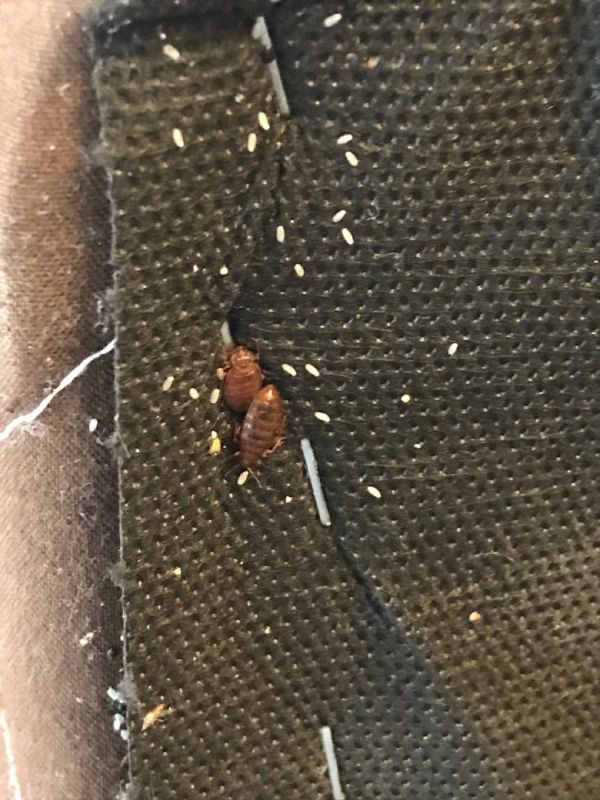Exploring the Science Behind Bed Bug Heat Treatments as a Lasting Insect Administration Method
In the realm of parasite monitoring, the pursuit for lasting and reliable options remains a constant quest. One such method that has actually gained grip recently is the usage of heat treatments to battle bed pest infestations. By using the science behind thermal death factors for these persistent parasites, warmth treatments supply a promising alternative to typical chemical-based methods. The intricacies of how heat efficiently removes bed pests and the more comprehensive implications for sustainable bug management practices make this a subject worth exploring better.
Bed Bug Heat Therapy Refine

Thermal Fatality Point for Bed Bugs
Revealing bed pests to raised temperatures beyond their thermal resistance range is vital for accomplishing efficient elimination in warm treatment processes. The thermal death factor for bed bugs refers to the temperature level at which these bugs can not survive. Research suggests that bed bugs begin to perish when subjected to temperature levels above 113 ° F(45 ° C) for a continual duration. As the temperature level boosts, so does the death rate of bed pests. At around 118 ° F(48 ° C ), bed bugs start to pass away quickly, with a mortality rate of almost 99% within minutes of direct exposure. This demonstrates the level of sensitivity of bed bugs to high temperature levels and highlights the efficiency of heat treatments in removing invasions. By reaching and keeping temperature levels above the thermal fatality point for bed insects, bug administration professionals can make certain extensive removal of bed insect populations, consisting of hard-to-reach areas where chemical therapies might be less effective. Recognizing the thermal fatality factor for bed insects is crucial for executing effective warmth therapy approaches and attaining lasting pest management results.
Advantages of Warm Treatments
Having developed the essential thermal fatality point for bed pests, it is vital to currently explore the significant advantages that warm therapies provide in efficiently getting rid of these durable insects. Warm therapies existing several key benefits when contrasted to typical chemical approaches. One of the main benefits is that heat can penetrate deep right into gaps and splits where bed pests conceal, ensuring that also one of the most hard-to-reach areas are try here warmed to lethal temperature levels. This extensive strategy not just eliminates real-time bugs however additionally targets bed pest eggs, protecting against future problems.
Additionally, warmth treatments are eco pleasant and safe, making them a sustainable pest monitoring technique. Unlike chemical pesticides, warmth therapies do not leave harmful residues that can present dangers to human health and wellness or the atmosphere. This aspect is especially crucial in delicate atmospheres such as healthcare facilities, schools, and household locations where chemical usage may not be desirable.
Furthermore, heat therapies have a high success rate in removing bed pest infestations in a single treatment, decreasing the requirement for multiple sees and lessening disruption to passengers. This effectiveness not only conserves time and money however also provides satisfaction to those taking care of bed insect troubles.
Performance of Warmth Therapy

Research study studies have consistently demonstrated the effectiveness of warmth treatments in achieving a high rate of bed insect mortality. Effectively conducted warm therapies can reach all the gaps and splits where bed bugs may be nurturing, ensuring an extensive technique to extermination. Warm treatments have the added advantage of killing bed bug eggs, which are frequently resistant to traditional chemical treatments. Overall, the efficiency of heat treatments in eliminating bed pest problems makes them a sustainable and trusted insect monitoring method.
Sustainable Pest Management Advantages
Carrying out lasting bug monitoring techniques uses lasting benefits for both the environment and public health. By making use of approaches such as warmth therapies for parasite control, we can minimize the dependence on damaging chemical pesticides that can have damaging effects on environments and human health - exterminator. Lasting parasite monitoring approaches assist in maintaining biodiversity by targeting specific bugs without harming non-target microorganisms, consequently keeping a balanced ecological community
Furthermore, lasting pest administration techniques contribute to the total health and wellness of the public. By minimizing exposure to toxic chemicals utilized in conventional parasite control methods, warmth therapies give a much safer choice for parasite management in household, commercial, and public spaces. This reduction in chemical usage also aids in avoiding pesticide residues from infecting dirt, air, and water, guarding ecological quality.
Verdict
Finally, bed pest heat therapies have actually been revealed to be a effective and lasting pest monitoring approach. The thermal fatality factor for bed bugs makes them prone to warm treatments, which have various advantages over conventional chemical therapies. The performance of warm therapies in removing bed pest problems while lessening ecological influence highlights the capacity of this method as a sustainable solution for parasite control.
The bed insect warm treatment process involves increasing the temperature within infested locations to a degree that efficiently eliminates bed bugs and their eggs. By getting to and preserving temperature have a peek here levels above the thermal fatality factor for bed pests, insect administration experts can make certain thorough removal of bed pest populaces, including hard-to-reach areas where chemical treatments might be much less efficient. One of the main benefits is that warmth can pass through deep into crevices and cracks where bed bugs hide, making certain that even the most hard-to-reach locations are heated to dangerous temperature levels. Unlike chemical treatments that may leave behind resistant populaces, warmth therapies provide a ecologically pleasant and safe option that can permeate deep into furniture, walls, and various other hard-to-reach locations where bed pests conceal.
The thermal fatality point for bed insects makes them susceptible to heat treatments, which have numerous advantages over conventional chemical therapies.